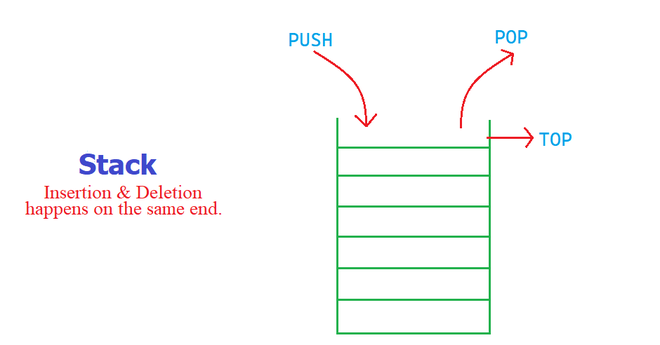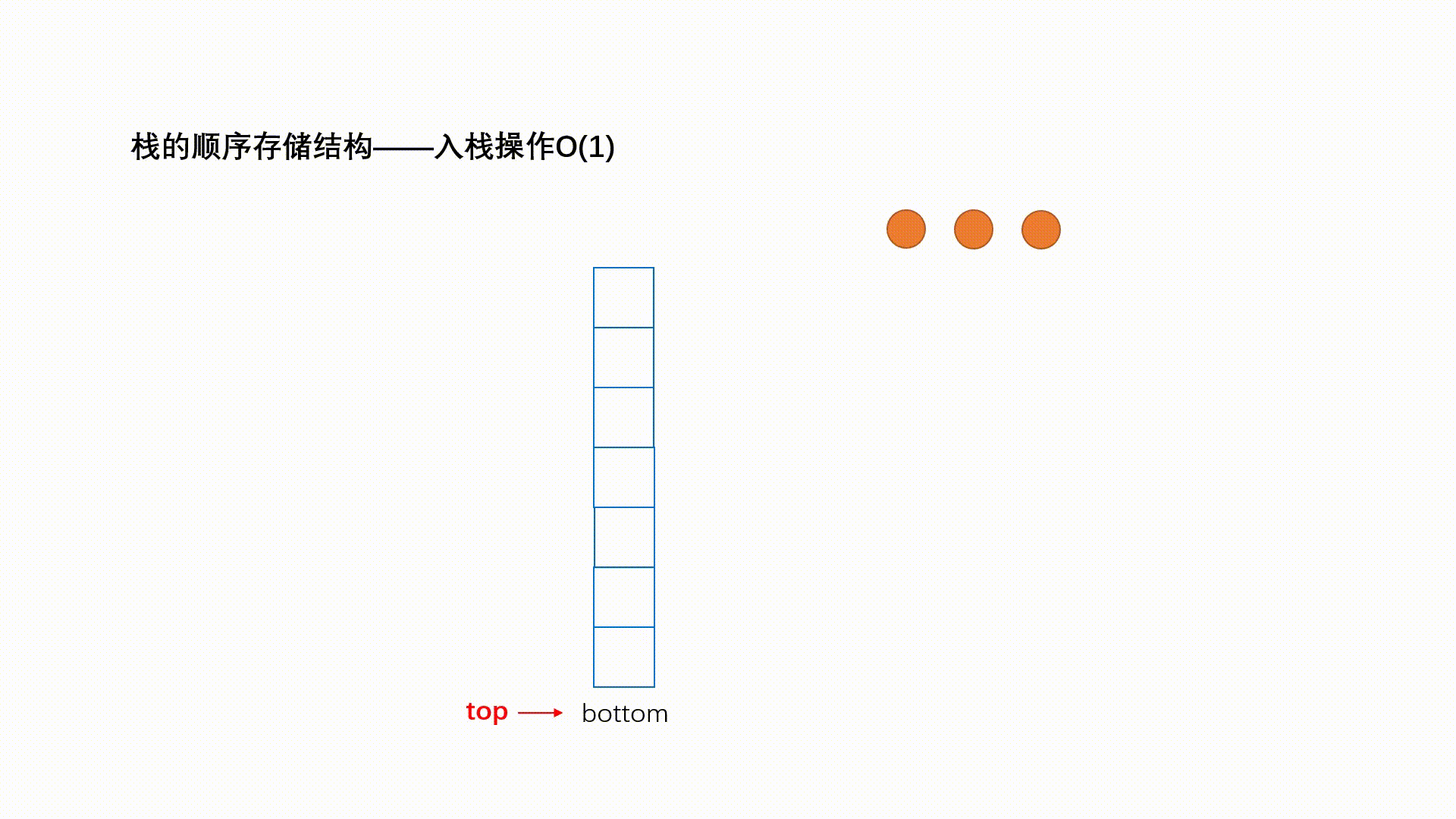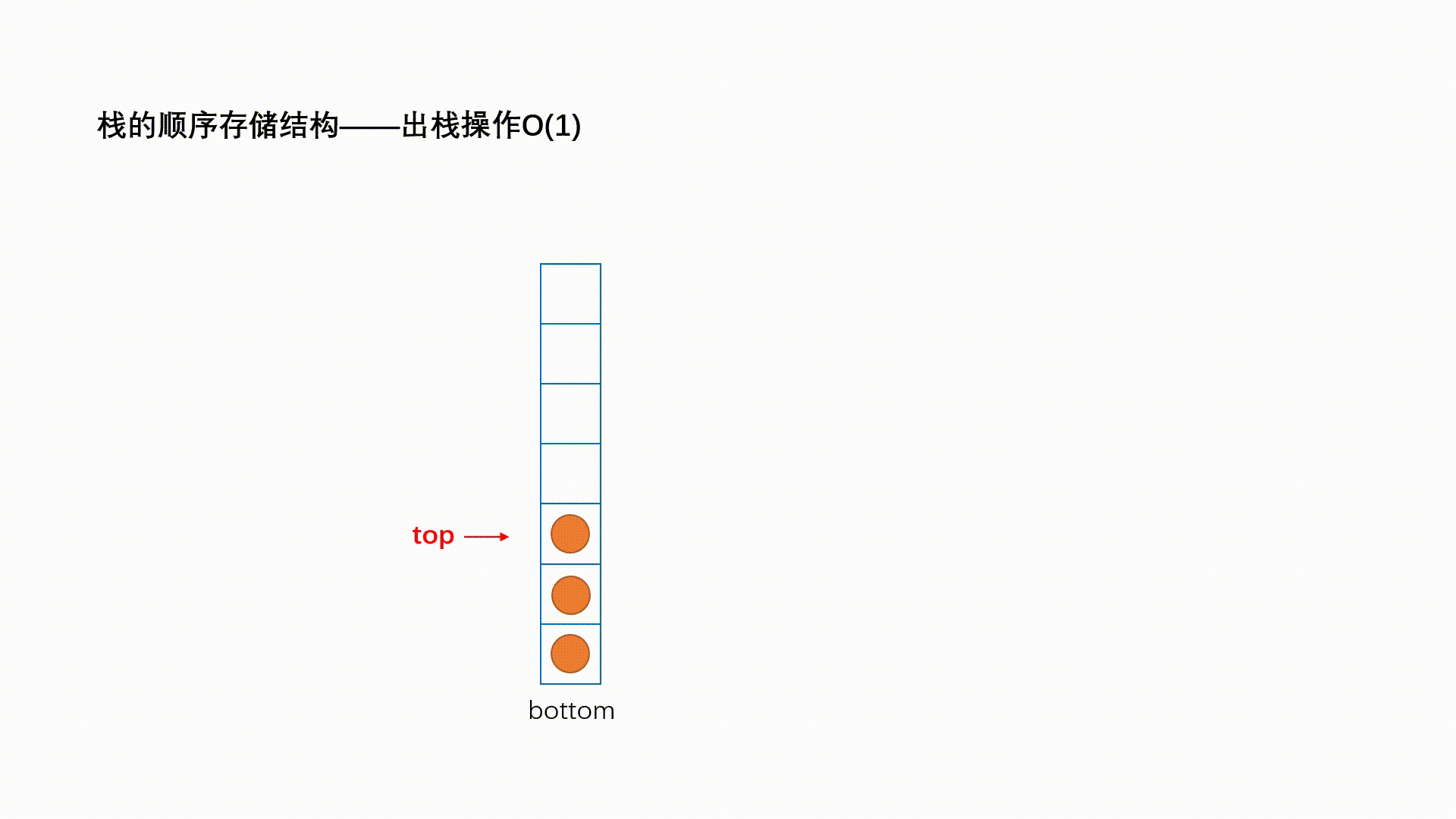跟着动画学 Go 数据结构之Go 实现栈
什么是栈

类似于链表,栈是一种简单的数据结构。在栈中,数据的取值顺序非常重要。
栈的生活例子
栈也有许多真实生活示例。考虑在食堂中彼此堆叠的板的简单示例。栈有点像洗碟子然后堆碟子,最先洗的一定是最上面的碟子,然后洗干净后,放到碟子的最下面。第一个放好的碟子永远是最后一个被取用的。可以简单地看到它遵循LIFO / FILO 原则。
栈的操作
栈是一种插入和删除总在一端的有序列表,最后插入的元素时总是第一个被删除的元素,这种特征也被称为 Last in First out(LIFO)或者 First in Last out(FILO)。
入栈的操作叫做 ;
出栈的操作叫做 。
往一个满栈里插入元素叫做 栈溢出;
栈的方法
push(e): Add e at the top of the (implicit) stack
pop(): Remove and return the top element of the stack
empty(): Return the Boolean value true just in case the stack is empty.
top(): Return the top element of that stack without removing it.
栈的结构
type Stack interface {
containers.Container
Push(e interface{})
Pop() (interface{}, error)
Top() (interface{}, error)
}


栈的数组实现
import "errors"
type ArrayStack struct {
store []interface{}
}
func (s *ArrayStack) Size() int {
return len(s.store)
}
func (s *ArrayStack) Empty() bool {
return len(s.store) == 0
}
func (s *ArrayStack) Clear() {
s.store = make([]interface{}, 0, 10)
}
func (s *ArrayStack) Push(e interface{}) {
s.store = append(s.store, e)
}
func (s *ArrayStack) Pop() (interface{}, err) {
if len(s.store) == 0 {
return nil, errors.New("Pop: the stack cannot be empty")
}
result := s.store[len(s.store)-1]
s.store = s.store[:len(s.store)-1]
return result, nil
}
func (s *ArrayStack) Top() (interface{}, error) {
if len(s.store) == 0 {
return nil, errors.New("Top: stack cannot be empty")
}
return s.store[len(s.store)-1], nil
}
栈的链表实现
import "errors"
type ArrayStack struct {
store []interface{}
}
func (s *ArrayStack) Size() int {
return len(s.store)
}
func (s *ArrayStack) Empty() bool {
return len(s.store) == 0
}
func (s *ArrayStack) Clear() {
s.store = make([]interface{}, 0, 10)
}
func (s *ArrayStack) Push(e interface{}) {
s.store = append(s.store, e)
}
func (s *ArrayStack) Pop() (interface{}, err) {
if len(s.store) == 0 {
return nil, errors.New("Pop: the stack cannot be empty")
}
result := s.store[len(s.store)-1]
s.store = s.store[:len(s.store)-1]
return result, nil
}
func (s *ArrayStack) Top() (interface{}, error) {
if len(s.store) == 0 {
return nil, errors.New("Top: stack cannot be empty")
}
return s.store[len(s.store)-1], nil
}
type LinkedStack struct{
topPtr *node
count int
}
func (s *LinkedStack) Size() int {
return s.count
}
func (s *LinkedStack) Empty() bool {
return s.count == 0
}
func (s *LinkedStack) Clear() {
s.count = 0
s.topPtr = nil
}
func (s *LinkedStack) Push(e interface{}) {
s.topPtr = &node{e, s.topPtr}
s.count++
}
func (s *LinkedStack) Pop() (interface{}, error) {
if s.count == 0 {
return nil, errors.New("Pop: the stack cannot be empty")
}
result := s.topPtr.item
s.topPtr = s.topPtr.next
s.count--
return result, nil
}
func (s *LinkedStack) Top() (interface{}, error) {
if s.count == 0 {
return nil, errors.New("Pop: the stack cannot be empty")
}
result s.topPtr.item, nil
}